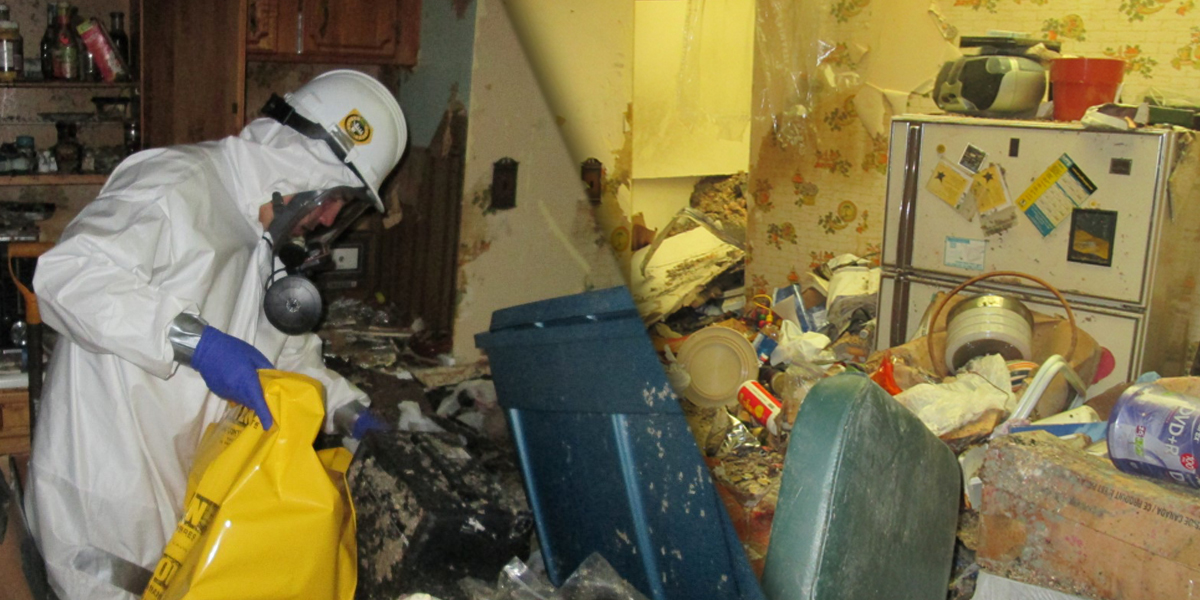Comprehensive Guide to Biohazard Cleanup
Learn everything about biohazard cleanup, including its importance, processes, and safety measures. Discover professional tips for handling biohazardous materials effectively and responsibly
Biohazard cleanup is a critical process that involves the removal, cleaning, and sanitization of areas contaminated by biological substances that pose risks to human health. This includes blood, bodily fluids, and other potentially infectious materials (OPIM). Whether due to an accident, crime, or natural disaster, biohazard cleanup requires specialized knowledge, tools, and adherence to strict regulations to ensure the safety of individuals and the environment.

What is Biohazard Cleanup?
Biohazard cleanup refers to the professional handling and removal of hazardous biological materials. These materials can transmit diseases, cause infections, or pose other health risks. Common scenarios requiring biohazard cleanup include:
- Crime scenes involving blood and bodily fluids.
- Accidents in workplaces or homes.
- Unattended deaths leading to decomposition.
- Medical waste disposal from hospitals and clinics.
- Hoarding situations with contamination risks.
- Infectious disease decontamination, such as COVID-19 outbreaks.
Why is Professional Biohazard Cleanup Important?
Handling biohazardous materials is not just a matter of cleanliness—it’s a matter of health and safety. Here’s why professional biohazard cleanup is crucial:
- Health Risks: Pathogens like bacteria, viruses, and fungi in biohazardous materials can cause severe illnesses.
- Regulatory Compliance: Professionals ensure compliance with local, state, and federal regulations regarding biohazard waste disposal.
- Thorough Cleaning: Professionals use specialized equipment and cleaning agents to ensure complete decontamination.
- Emotional Relief: In cases of trauma or death, professional cleaners help families avoid the emotional strain of dealing with the aftermath.
Steps in the Biohazard Cleanup Process
Biohazard cleanup involves multiple steps to ensure safety and thorough decontamination:
- Assessment: The cleanup team evaluates the scene to determine the scope of contamination and required resources.
- Containment: The area is secured to prevent cross-contamination.
- Personal Protective Equipment (PPE): Cleanup professionals wear protective gear, including gloves, masks, suits, and goggles.
- Removal: Contaminated materials, such as carpets, furniture, and personal items, are carefully removed and disposed of according to regulations.
- Cleaning and Disinfecting: Specialized cleaning agents and techniques are used to remove all biohazardous substances.
- Deodorizing: Advanced equipment neutralizes lingering odors.
- Verification: The area is inspected to ensure it meets safety standards.
- Disposal: Biohazard waste is disposed of following strict guidelines to protect public health and the environment.
Key Tools and Equipment Used in Biohazard Cleanup
Professional biohazard cleanup teams rely on specialized tools and materials, including:
- PPE: Gloves, suits, respirators, and goggles.
- Disinfectants: Hospital-grade cleaning agents to kill pathogens.
- Vacuum Systems: HEPA-filtered vacuums to remove airborne particles.
- Enzymatic Cleaners: For breaking down organic matter.
- Deodorizing Machines: Ozone generators and foggers for odor control.
- Sharps Containers: For safe disposal of needles and sharp objects.
Regulations and Compliance
Biohazard cleanup is governed by strict regulations to ensure public safety. Professionals must adhere to standards set by:
- OSHA (Occupational Safety and Health Administration): Guidelines for handling bloodborne pathogens.
- EPA (Environmental Protection Agency): Rules for hazardous waste disposal.
- State and Local Authorities: Additional regulations depending on the location.
Failure to comply with these regulations can result in legal penalties and public health risks.
The Role of Professional Cleanup Companies
Hiring a professional biohazard cleanup company ensures safety, efficiency, and peace of mind. These companies provide:
- Trained Technicians: Certified experts with experience in handling hazardous materials.
- Specialized Equipment: Access to advanced tools for thorough cleaning.
- Emergency Response: 24/7 availability for urgent situations.
- Documentation: Detailed records for insurance and regulatory purposes.
DIY Biohazard Cleanup: Why It’s Not Recommended
Attempting to clean up biohazards without professional help is risky for several reasons:
- Exposure to Pathogens: Without proper training and PPE, individuals can contract diseases.
- Improper Disposal: Mishandling biohazard waste can lead to contamination and legal issues.
- Emotional Impact: Cleaning up after a traumatic event can be emotionally overwhelming.
- Ineffectiveness: Lack of specialized equipment may result in incomplete decontamination.
Common Myths About Biohazard Cleanup
-
“It’s just like regular cleaning.”
Biohazard cleanup involves specialized techniques and materials to ensure safety and compliance. -
“Household cleaners are enough.”
Most household cleaning products are ineffective against bloodborne pathogens and other hazards. -
“Anyone can do it.”
Biohazard cleanup requires certification, training, and experience to handle safely.
Tips for Choosing a Biohazard Cleanup Service
- Certification: Ensure the company is certified and compliant with OSHA and EPA standards.
- Experience: Look for a provider with a proven track record in biohazard cleanup.
- Availability: Choose a service with 24/7 emergency response.
- Insurance Assistance: Opt for a company that helps with insurance claims and documentation.
Cost of Biohazard Cleanup
The cost of biohazard cleanup depends on various factors, including:
- The size and scope of the cleanup.
- The type of biohazard material involved.
- The duration of the cleanup process.
On average, biohazard cleanup costs range from $1,000 to $10,000 or more. Many companies work with insurance providers to reduce out-of-pocket expenses.
Preventing Biohazard Incidents
While accidents and unforeseen events cannot always be avoided, taking proactive measures can minimize risks:
- Proper Storage: Store hazardous materials safely.
- Training: Educate employees about safety protocols for handling biohazards.
- First Aid Kits: Equip kits with PPE for handling minor incidents.
- Regular Inspections: Conduct routine checks for potential hazards.
Biohazard cleanup is an essential service that ensures the safety of individuals and communities. Whether dealing with a crime scene, medical waste, or a traumatic event, professional cleanup companies provide expertise, efficiency, and compliance with regulations. Understanding the importance of proper biohazard cleanup can help you make informed decisions during critical situations. Always trust certified professionals to handle hazardous materials to protect your health and the environment. Click here
What's Your Reaction?




















